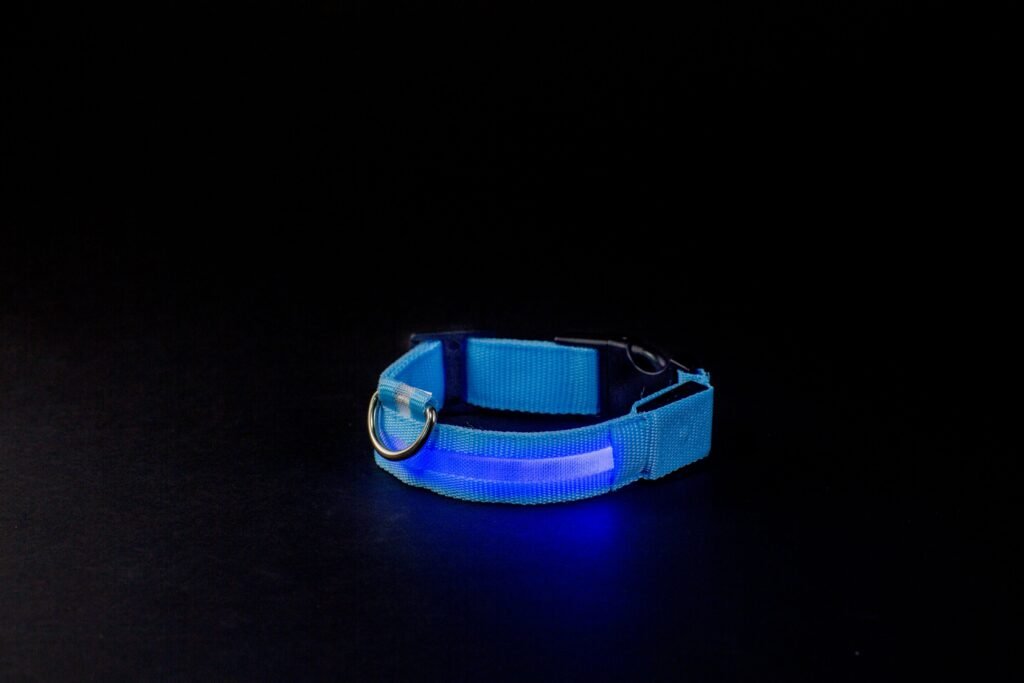Having a dog that barks excessively, runs away, or displays other unwanted behaviors, may force you to use a shock collar to train your dog. A shock collar, also known as an electronic collar, e-collar, or remote training collar, is a device that delivers a mild electric shock to your dog’s neck when you press a button on a remote control.
The shock is supposed to get your dog’s attention and discourage them from doing bad behavior. But how does a shock collar work exactly, and is it a humane and effective way to train your dog? In this blog post, we will answer these questions and more.
Table of Contents
What is a Shock Collar and How Does a Shock Collar Work?
A shock collar consists of two main parts: a collar that fits around your dog’s neck and a remote control that you hold in your hand. It has metal contact points that touch your dog’s skin and deliver an electric shock.
The remote control allows you to adjust the intensity and duration of the shock, as well as choose between different modes of stimulation, such as tone, vibration, or shock.
The shock collar works by sending a signal from the remote control to the collar, which then emits a static electric shock to your dog’s neck.
It is not strong enough to hurt your dog, but it is enough to startle them and get their attention. The theory is that your dog will eventually associate the shock with the bad behavior and will stop doing it.

Pros and Cons of Using a Shock Collar
Shock collars are controversial among dog owners and trainers, as they have both pros and cons. Here are some of the advantages and disadvantages of using a shock collar for dog training.
Pros
- Shock collars can be effective for correcting unwanted behaviors, such as excessive barking, jumping, digging, chasing, or running away.
- It can give you more control over your dog, especially if they are stubborn, aggressive, or hard to train. You can also train your dog from a distance, without using a leash or physical force.
- You can customize it to suit your dog’s size, temperament, and sensitivity, by adjusting the intensity and duration of the shock, as well as choosing between different modes of stimulation.
- One can use shock collars to reinforce good behaviors in conjunction with other positive training methods, such as rewards, praise, and commands.
Cons
- May result in physical and psychological harm to your dog, such as burns, injuries, stress, anxiety, fear, aggression, or depression.
- These collars can interfere with the bond and trust between you and your dog, as your dog may associate you with the shock and not the behavior.
- Ineffective or counterproductive for some dogs, who may become desensitized, defiant, or more reactive to the shock.
- Can be expensive, complicated, or unreliable, depending on the quality, durability, and functionality of the device.
Best Ways to Use a Shock Collar for Dog Training
There is no definitive answer to when to use a shock collar for dog training, as it depends on several factors, such as your dog’s age, temperament, behavior, and training goals. However, some general guidelines are:
- Start with basic obedience training using positive reinforcement methods, before introducing a shock collar. This will help your dog learn the commands and the expectations and will make the shock collar more effective and less stressful.
- Use a shock collar only as a last resort, after trying other positive training methods, such as rewards, praise, and commands, and only for specific and serious behaviors, such as excessive barking, jumping, digging, chasing, or running away.
- A shock collar should be used only when your dog is old enough and mature enough to understand the connection between shock and behaviour. The ideal age to start using a shock collar varies from dog to dog.
- Use a shock collar only when you are present and attentive, and not when you are away or distracted, to avoid accidental or unnecessary shocks.
How to Use a Shock Collar Safely and Effectively?
If you decide to use a shock collar to train your dog, you should follow some guidelines to ensure that you use it safely and effectively. Here are some tips to help you use a shock collar properly:
- Choose a shock collar that is appropriate for your dog’s size, breed, age, and personality, and that has adjustable settings and features, such as tone, vibration, and shock.
- Fit the collar snugly and comfortably around your dog’s neck, making sure that the contact points touch your dog’s skin and that the collar does not move or rotate.
- Test the shock collar on yourself first, to feel the sensation and determine the lowest level of shock that your dog can feel.
- Start the training with the lowest level of shock and gradually increase it if needed, until you find the optimal level that gets your dog’s attention but does not cause them pain or distress.
- Use the shock collar only as a last resort, after trying other positive training methods, such as rewards, praise, and commands, and only for a short period of time, not longer than 10 seconds per shock.
- A shock collar must be used only for specific and serious behaviors, such as excessive barking, jumping, digging, chasing, or running away, and not for minor or normal behaviors, such as whining, sniffing, or playing.
- Use the collar only when you are present and attentive, and not when you are away or distracted, to avoid accidental or unnecessary shocks.
Final Thoughts:
Shock collars are one of the many tools that you can use to train your dog, but they are not the only or the best ones. Shock collars have both pros and cons, and they should be used with caution and care. Shock collars can be effective for correcting unwanted behaviors, but they can also cause harm to your dog if used incorrectly or excessively. Shock collars should be used only as a last resort, after trying other positive training methods.

